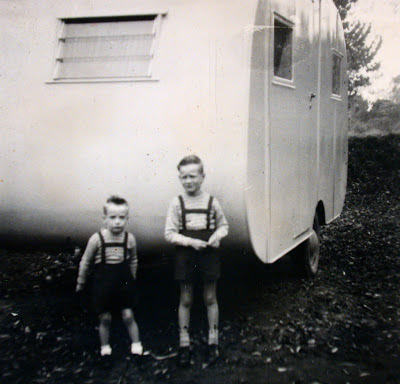I remember years ago spending days at the Public Record Office (PRO) in Victoria trying to track down the properties that various ancestors selected in the 1800s.
We first had to locate the parish maps and that led to the wonderful selection files that are held at the PRO. It wasn't easy to find the appropriate maps - some editions of the maps didn't include the famous fraction and without the fraction it was very difficult to access the selection files. The fraction? If you look at allotment 48 on the map below you can see in the bottom left a number 5735 over 19. That was the magic number that led to the selection papers of my great-great-grandfather, William George Smith. W G Smith and his wife Sarah Alice (nee Hillgrove) lived all their married lives on this property. Their home there was called 'Eulong'.
 |
Part of Dunmunkle Parish, County of Borung, Victoria, Feb. 1880
Online at State Library of Victoria. Accessed from a link at Trove. |
 |
| The same area today, entirely cultivated for crops. Google Maps. |
So if William George (known as George) owned the land why does the map show Mary Smith as the owner?
Mary was George's sister and so was Alice Rebecca Smith whose name is on the allotment next door. Both girls and several brothers selected land in the parish at the same time as their father Ephraim when the family moved to the Wimmera district from Warrnambool in the 1870s. Anyone over the age of 18 years was able to select a maximum of 320 acres so that meant the girls could apply. George wasn't old enough. The family members would have all worked as a team on all of the land parcels. There were strict government regulations to comply with including improvements, enclosing, clearing and cultivation, as well as a requirement that they live on the land. In 1892 Mary transferred the lease on allotment 48 to her brother George.
 |
| The dry bed of Dunmunkle Creek. Copyright David Craker |
See that wriggly line on the left side of the map? That's Dunmunkle Creek. When the Smiths first moved to the area Ephraim's wife Elizabeth went looking for the creek, in vain. It looks like this most of the time - not exactly a reliable water supply.
Today the parish maps are easy to find. I found the Dunmunkle Parish map on a link via Trove to the State Library of Victoria's website. If you know where to look they are also on the PRO's website. Not so easy is accessing the selection files. You have to go to the PRO in person for those but it's worth it. They are little goldmines. It's amazing to be able to hold in your hand, as I did, a letter written by an ancestor 120 years ago explaining to 'the government' that he wouldn't be able to pay his lease because the crop failed.


































